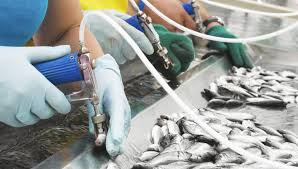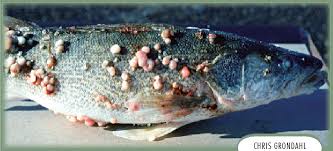Viruses are very small infectious agents that multiply only within the living cells of an animal or plant host. Unlike other microorganisms, such as bacteria or fungi, viruses do not have organelles for their own metabolism. They rely on the machinery of the infected host cell for growth and reproduction.
A virus has two parts: the internal part, known as the virion or virus particle, is composed of nucleic acid, the same material that makes up genes.
This virion is enclosed in an external protein coat called a capsid. Viruses are broadly categorized by the type of nucleic acid they contain either RNA (ribonucleic acid) or DNA (deoxyribonucleic acid). Additionally, virologists classify viruses by their shape, such as icosahedral (20-sided) or helical (rod-shaped) particles.
Detection of Viral Diseases
Due to their small size, viruses are often difficult to detect. Parasites, bacteria, or fungi are easier to identify, so diagnosticians first check for these organisms before considering the possibility of a viral cause. There are three primary techniques for detecting viruses:
1. Electron Microscopy (EM): This method visualizes virus particles within tissue cells.
2. Cell Culture: This involves growing viruses in a laboratory using specific fish cells in vitro (“in a glass”).
3. Serology: Serum from animals known to be infected is tested to see if it “recognizes” the suspected virus, confirming that the virus in the animal matches the one isolated in the lab.
Viruses are often species-specific and tissue-specific, meaning they may only grow in particular types of cells from specific animals. This can make isolating viral agents from fish difficult, as there may not be suitable cell-lines available for a particular species.
Read Also: Gray Leaf Spot (Stemphylium spp) – Symptoms and Damage Control
Management and Control of Viral Diseases

Viral diseases cannot be treated with medication because viruses use the host’s cells for survival and reproduction. Therefore, it is essential to provide proper care for fish suspected of having a viral infection to allow their natural defense mechanisms to work.
This includes maintaining excellent water quality, providing a high-quality diet, keeping facilities clean, and isolating sick or potentially infected stock. Equipment, boots, and hands should be disinfected after contact with potentially infected stock.
Chlorine bleach is an effective virucidal agent and can disinfect equipment, though it is toxic to fish and must be thoroughly rinsed. Quaternary ammonium compounds are a safer alternative, effective for disinfection and suitable for use in foot baths. However, items must still be rinsed before contact with live fish.
When introducing new fish into breeding populations, a quarantine period of three to four weeks should be observed. This quarantine is primarily aimed at preventing bacterial and parasitic diseases, as current methods for detecting viral diseases are inadequate. Quarantine strategies specific to viral diseases will require further research to accurately identify carriers of viral infections.
Temperature as a Control Method for Viral Diseases
For many viral diseases, the severity of infection and mortality rate are influenced by water temperature. For instance, channel catfish virus disease causes more significant losses when water temperatures reach or exceed 25°C (77°F).
In experimental conditions, lowering the water temperature from 28°C (82°F) to 19°C (66°F) reduced mortality rates dramatically. In temperature-controlled environments, adjusting water temperature can minimize the impact of viral diseases.
Read Also: Recommended Number of Ruminant Animals per Housing Unit for Fattening
Vaccination in Aquaculture

Vaccination is widely used to prevent viral diseases in humans and domestic animals but is less common in aquaculture. Vaccine development is costly, and only a few viral diseases of fish have enough economic impact to warrant vaccine investment.
Additionally, fish are cold-blooded animals, making their immune response to vaccines less predictable and possibly requiring more frequent vaccinations. Currently, most vaccines in aquaculture are used for bacterial diseases, especially in salmonid production. Vaccines are administered by injection or immersion bath, and there are efforts to develop oral vaccines.
Common Viral Diseases of Fish
1. Lymphocystis
This is a common viral disease in freshwater fish, characterized by disfiguring lesions on the skin and fins. Although chronic, lymphocystis is rarely fatal. The virus infects cells, forcing them to produce more viruses. Since viral diseases cannot be distinguished from bacterial ones without special laboratory tests, diagnosis is difficult, and there are no specific treatments for viral infections.
i. Treatment: There is no known cure for lymphocystis. Medications, including antibiotics, are ineffective. If lesions are confined to a fin, trimming the infected portion and applying an antibiotic to prevent bacterial infections may help, though the virus may reappear.
2. Viral Hemorrhagic Septicemia Virus (VHSV)
Viral Hemorrhagic Septicemia Virus (VHSV) is a significant fish virus that has caused large-scale fish kills in both fresh and saltwater environments. It is highly infectious, predominantly affecting rainbow trout (Oncorhynchus mykiss) in aquaculture.
VHSV is a negative-stranded RNA virus from the Rhabdoviridae family and Novirhabdovirus genus. The virus is divided into four genotypes and ten subtypes, with varying geographical distributions, host ranges, and infection patterns.
VHSV has been isolated in the temperate Northern Hemisphere, including North America, Asia, and Europe. The virus is endemic in parts of Europe and has occasionally caused outbreaks in Scandinavia and the British Isles. It has been isolated from more than 82 different fish species, demonstrating its wide host range and potential impact on aquaculture.
Do you have any questions, suggestions, or contributions? If so, please feel free to use the comment box below to share your thoughts. We also encourage you to kindly share this information with others who might benefit from it. Since we can’t reach everyone at once, we truly appreciate your help in spreading the word. Thank you so much for your support and for sharing!
Read Also: 4 Steps to help an Orange Tree Produce Sweet Oranges

